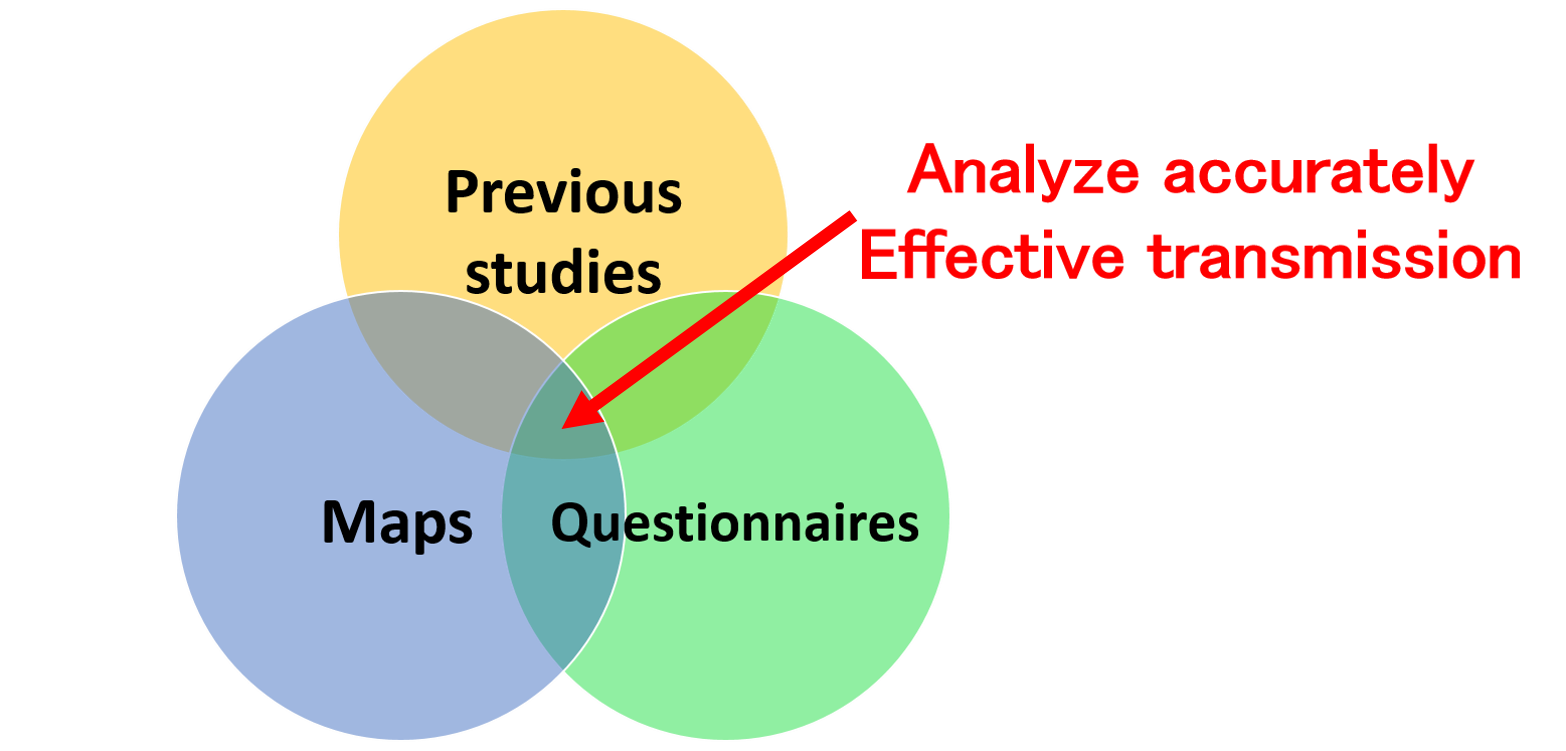Research Process
 What did we do to deal with heatstroke?
What did we do to deal with heatstroke?
We analyzed heatstroke patients in the following three ways dividing into the literatures, making maps, and providing original questionnaires to solve heatstroke. We explain which ways are used by each page as well as page introduction. The explanation of ways of research are written under each page introduction.
Basic knowledge of heatstroke
… You can learn basic information about heatstroke. First of all, learn and check what is commonly said, and take your step in solving heatstroke.

… Collect reliable information and create the basis of our activity at first!!
Heatstroke of Japanese
Heatstroke of foreign visitors
… We summarized our findings. We analyzed from several perspectives so that we could approach the problem of heat stroke more deeply. We will be happy if you know that heatstroke is not just someone else’s problem, and understand that everyone has the risk of catching heatstroke.

… Visualize information and research the roots of issues!!
… Approach real opinion!!
Based on many opinions, we explored the causes of heatstroke finely and deeply and we made every effort to solve the issues.
Action to solve the problems
… This is a summary of the our activities. To solve the problem of heatstroke, the first step is to know it well. Please feel free to download the materials at your own needs.
… Think the effective and efficient way of spreading our analysis!!
Olympics and heatstroke
… The Tokyo Olympics is coming. It is said that during the Olympic season the risk of heatstroke will be rising. Please look at the strategies we have considered for 2020 and think how you can apply them to deal with heatstroke.

… Create ideas of measures of heatstroke toward 2020 as a compilation of our activity!!
… Develop ideas of measures to meet the need based on questionnaire result!!
What we think about from heatstroke
… Our conclusions are listed as follows. Please feel free to share your thoughts, ideas with us.
So far, you have seen heatstroke carefully, in order of investigation, analysis, transmission. Here, you can send out your ideas what you consider from heatstroke or our activity.
By looking at the website in such a order, we hope you could know the heatstroke more, and think about it more deeply, send out your opinions to others to share the problem of heatstroke.
 We used many kinds of literatures which have high reliability such as papers, newspapers, Chronological Scientific Tables, books and websites which are supported by ministries and agencies with accurate information.(Click here for more datails about references) We paid our best attention to make sure there is no inaccurate or false information.
We used many kinds of literatures which have high reliability such as papers, newspapers, Chronological Scientific Tables, books and websites which are supported by ministries and agencies with accurate information.(Click here for more datails about references) We paid our best attention to make sure there is no inaccurate or false information.
 We analyzed data from Chronological Scientific Tables and the Meteorological Agency by using GIS. Specifically, we used the software “MANDARA10” and visualized the information about heatstroke.(Click here for more infomation about MANDARA10)By using GIS, we can analyze the information more accurately because we can find cautions by area and trend by comparing the maps.
We analyzed data from Chronological Scientific Tables and the Meteorological Agency by using GIS. Specifically, we used the software “MANDARA10” and visualized the information about heatstroke.(Click here for more infomation about MANDARA10)By using GIS, we can analyze the information more accurately because we can find cautions by area and trend by comparing the maps.

… GIS is the abbreviation for Geographic Information System. It is a system for storing and manipulating geographical information on computer. (According to:国土地理院 GISとは)
 We distribute questionnaires to over a hundred people in more than 21 countries people with various nationalities, age and sex.(Click here for more datails about questionnaires)By doing that, we were able to carry out objective analysis based on wide view.
We distribute questionnaires to over a hundred people in more than 21 countries people with various nationalities, age and sex.(Click here for more datails about questionnaires)By doing that, we were able to carry out objective analysis based on wide view.
By adopting these three ways, we were able to analyze the information accurately. Moreover, we thought using GIS and making graphs of questionnaires’ outcomes led us to deliver necessary information more effectively.


First, let's know heatstroke!
You can learn basic knowledge of heatstroke next.
